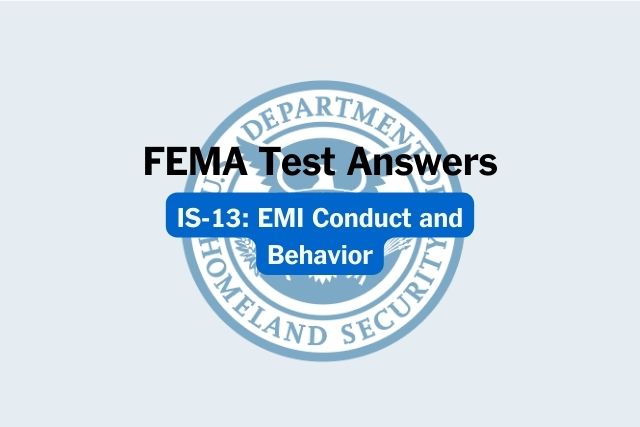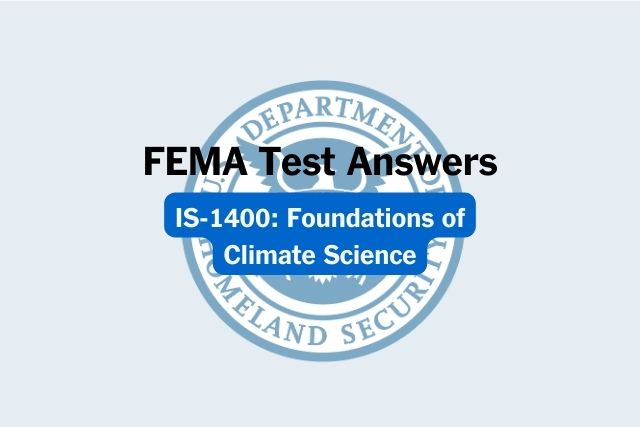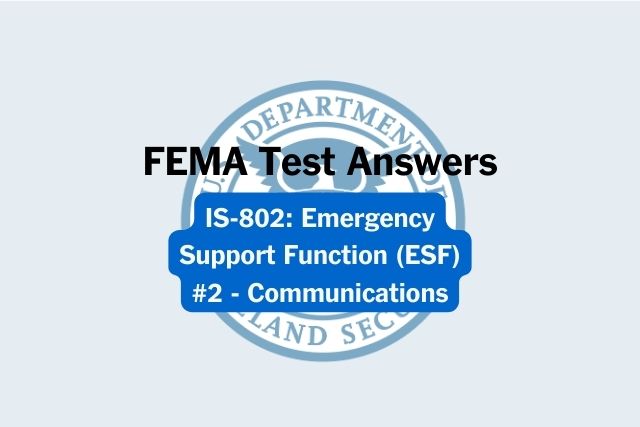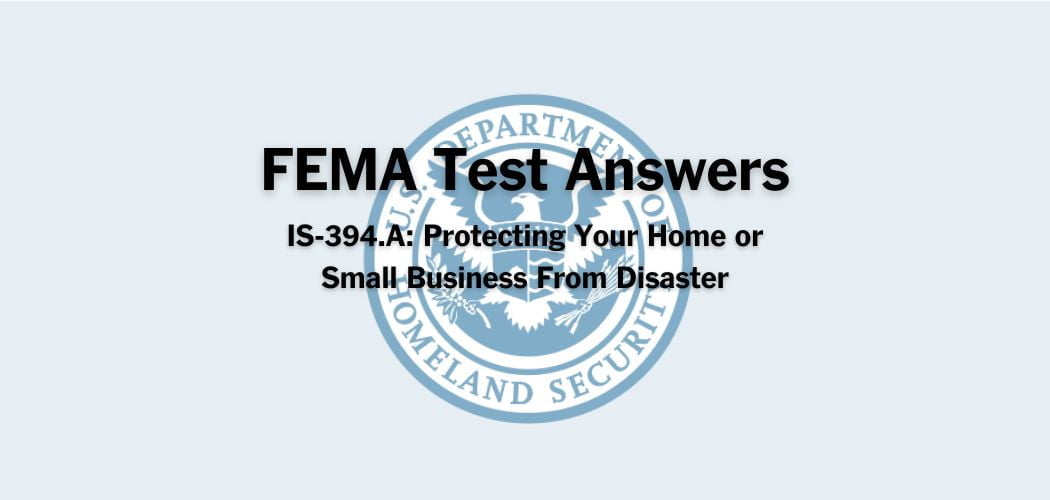Overview: The FEMA IS-1114 course was published on 11/15/2018 to provide the Large Commercial and RCBAP-authorized adjusters with the most challenging aspects of adjusting NFIP flood losses under the Residential Condominium Building Association Policy and the Dwelling Form, commonly referred to as the unit-owner policy.
Each time this test is loaded, you will receive a unique set of questions and answers. The test questions are scrambled to protect the integrity of the exam.
FEMA IS-1114 test answers
Question 1. To which of the following damages will the Dwelling Form loss assessment coverage respond?
A. Pool damage
B. Flood damage✅
C. Sidewalk damage
D. Fire damage
Question 2. Which of the following is not included in the calculation of the full replacement cost of the building?
A. Improvements to individually owned units✅
B. Covered building property
C. Indoor swimming pools
D. Improvements to common areas
Question 3. If a unit owner in a condominium building is insured under the Dwelling Form and is assessed by the condominium association as a result of coinsurance under the RCBAP, loss assessment coverage under the Dwelling Form will respond.
A. TRUE
B. FALSE✅
Question 4. Which form of the policy responds to Loss Assessment?
A. Residential Condominium Building Association Policy Form
B. Dwelling Form✅
C. General Property From
Question 5. You receive an assignment for a unit owner. During your first conversation with the named insured, you discover there is an RCBAP in force in the name of the association. How should you proceed?
A. Address the contents claim and advise the insured to let you know when the RCBAP has been completed so you can determine if any additional (building) damages can be addressed.✅
B. Don’t worry about the RCBAP, just move forward with the unit owner’s claim.
C. Deny the unit owner’s claim as you cannot have duplicated policies on the same property.
D. Move forward with the unit-owner claim and advise the company to subrogate against the RCBAP.
Question 6. In order for the RCBAP co-insurance penalty to not be applied, the insurance carrier must equal what percentage?
A. 75% of replacement cost value of the building
B. 65% of replacement cost value of the building
C. 80% of replacement cost value of the building✅
D. 70% of replacement cost value of the building
Question 7. A building insured under the RCBAP has 200 units; the replacement cost value of the building is $60,000,000. How much insurance is required in order for there to be no coinsurance applied to a flood claim?
A. “$45,000,000 “
B. “$58,000,000 “
C. “$48,000,000 “✅
D. “$42,000,000 “
E. “$47,000,000 “
Question 8. A condominium building insured under the General Property Form of the SFIP will be assessed coinsurance if not insured to value.
A. TRUE✅
B. FALSE
Question 9. Buildings having a condominium form of ownership are insurable under the RCBAP. What percentage of the square foot area must be residential?
A. 75%✅
B. 65%
C. 80%
D. 70%
Question 10. A commercial unit within a condominium building is occupied by a tenant who has purchased Coverage B, Personal Property coverage under the General Property Form. What percentage of Coverage B can be used for improvements made by the unit owner?
A. 15%✅
B. 25%
C. 5%
D. 20%
E. 10%
Question 11. The building valuation must include which of the following:
A. Building foundation✅
B. Exterior landscaping
C. Detached garages
Question 12. Which of the following statements is true?
A. The appraisal will provide information pertinent to determine the amount of flood damage.
B. The appraisal will determine if the building form of ownership is a condominium association.
C. The appraisal will provide information pertinent to determine the current valuation of the building.✅
Question 13. A condominium building is insured under the General Property Form, and only 40% of the square-foot area of the building is residential. Those residential units within this building can be insured under which form(s) of the policy?
A. Residential Condominium Building Association Policy Form
B. Contents only on the General Property Form
C. Dwelling Form.✅
D. Contents only on the Dwelling Form
E. General Property Form
Question 14. If the commercial square-foot area of a condominium building is 70% of the total area of the building, it is insurable under which form of the policy?
A. Residential Condominium Building Association Policy Form
B. Dwelling Form
C. Not insurable under the SFIP✅
D. General Property Form
Question 15. The named insured is Short Island Condo Association. After contacting the insured (John Smith) and making your initial inspection, you discover that the insured bought the condominium building from the previous owner, Short Island Condo Association. The insured (John Smith) is the owner of the building, not Short Island Condo Association. As the adjuster, what should you do?
A. Pay the Condo Association and let John Smith worry about how to cash the check.
B. Don’t worry about it; the insured will be able to cash the check.
C. Advise the company (WYO/DSA) that there is an underwriting issue.
D. Advise the company to pay John Smith, not Short Island Condo Association.✅
Question 16. Which of the following statements is true?
A. The General Property Form insuring a condominium building is responsible for improvements within those units that are residential.
B. The General Property Form insuring a condominium building is responsible for improvements within the individually owned units.
C. The General Property Form insuring a condominium building is responsible for improvements within the units owned in common by all unit owners.✅



